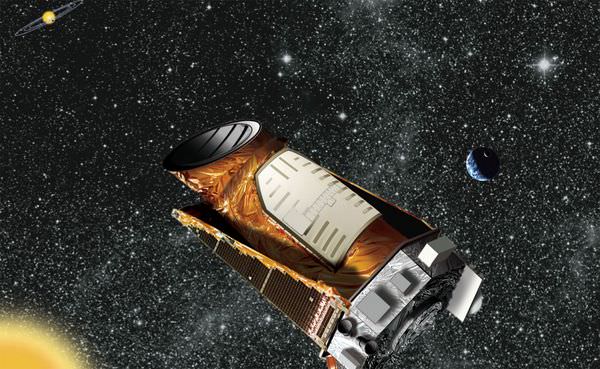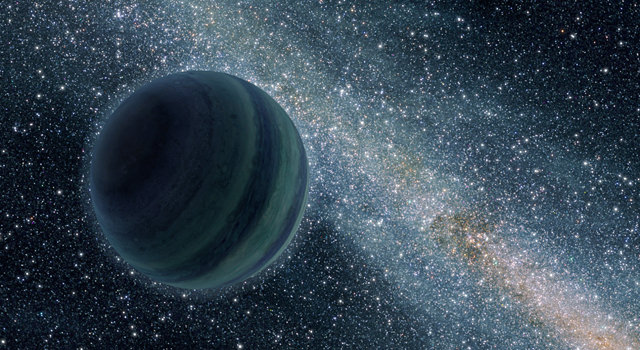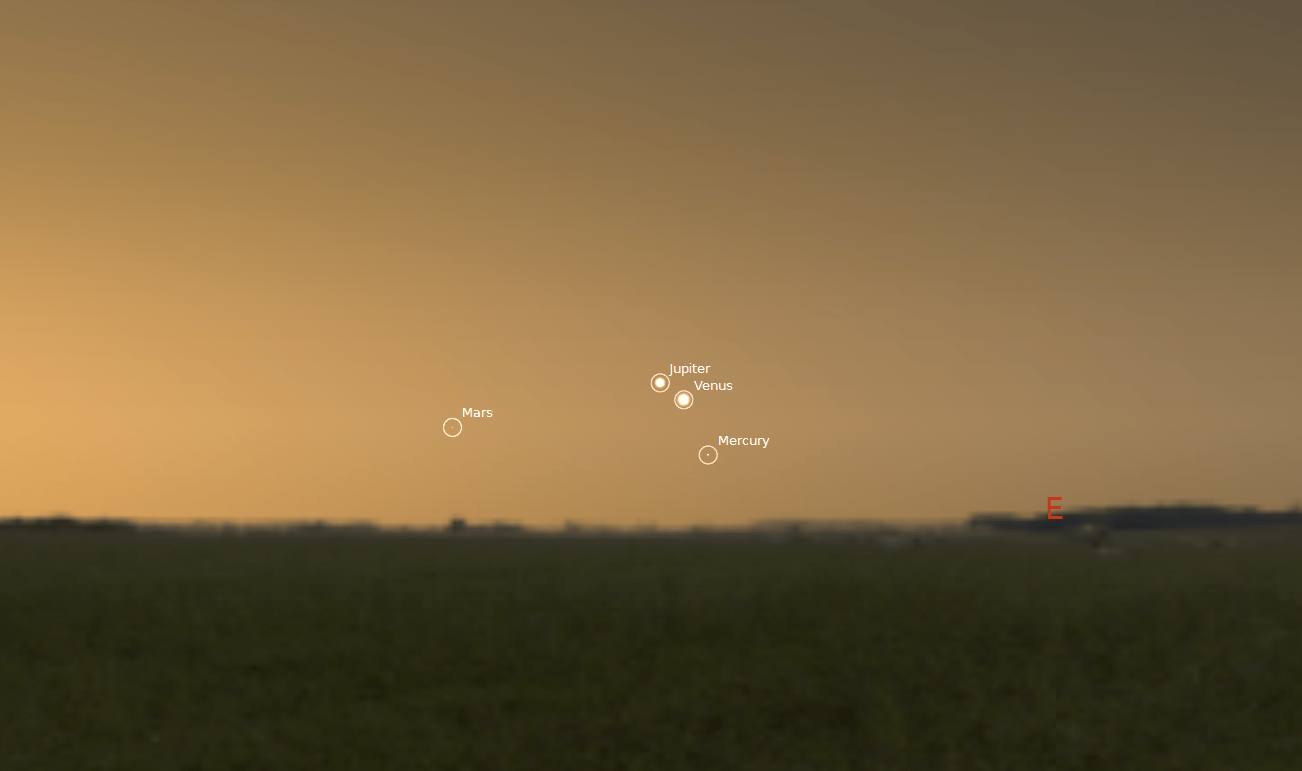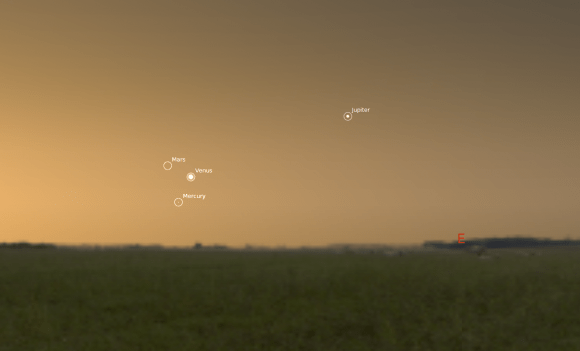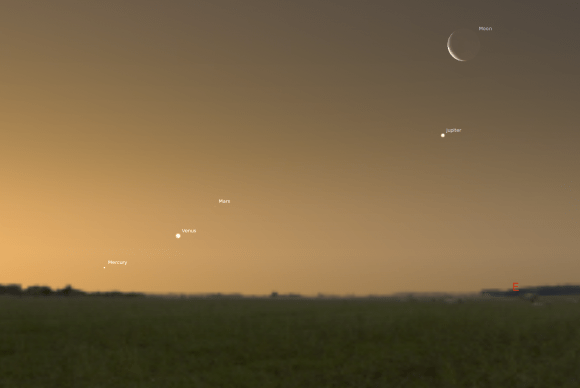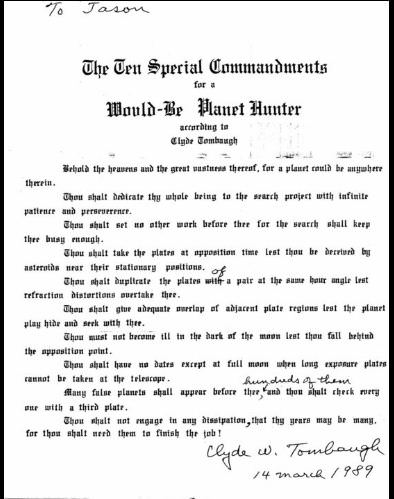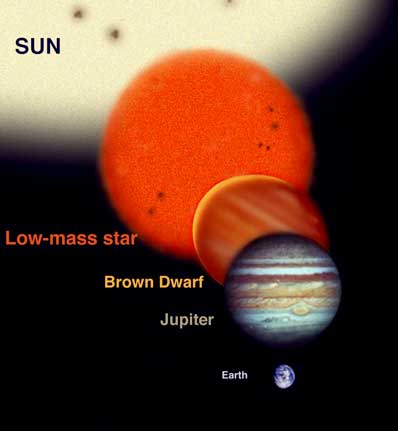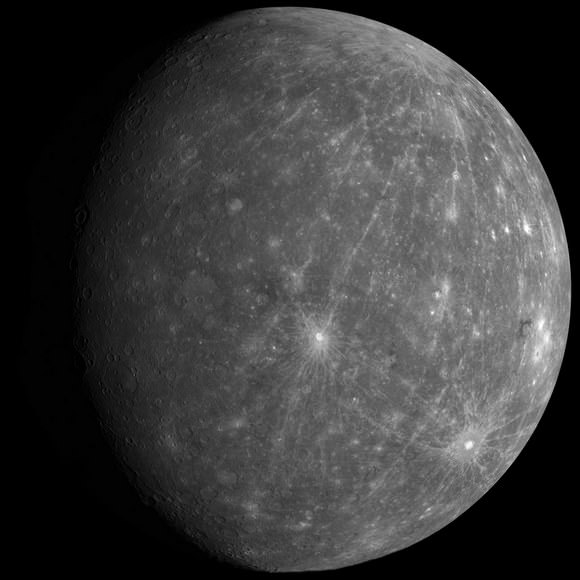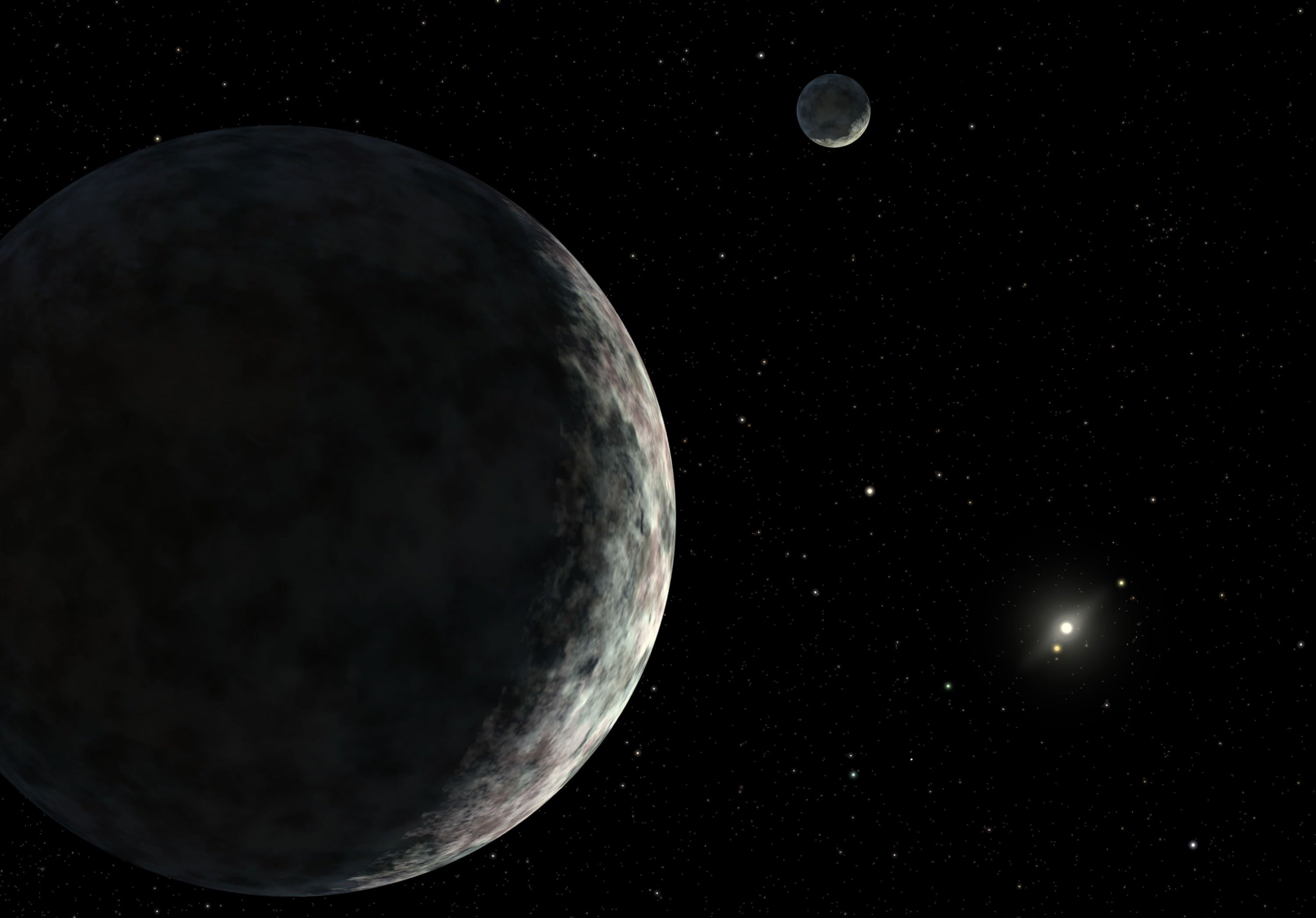[/caption]
Of the 1235 planetary candidates that NASA’s Kepler space telescope has found so far, 408 reside in multiple-planet systems – a growing trend that indicates planets do, in fact, like company.
The systems observed also seem to behave quite differently than our own solar system. In particular many are flatter than ours; that is, the planets orbit their stars in more or less the same exact plane. This, of course, is what allows Kepler to see them in the first place… the planets have to transit their stars perpendicular to Kepler’s point of view in order for it to detect the oh-so-subtle change in brightness that indicates the likely presence of a planet. In our solar system there’s a variation in the orbital plane of some planets up to 7º – enough of a difference that an alien Kepler-esque telescope might very well not be able to spot all eight planets.
The reason for this relative placidity in exoplanet orbits may be due to the lack of gas giants like Jupiter in these systems. So far, all the multiple-planet systems found have planets smaller than Neptune. Without the massive gravitational influence of a Jupiter-sized world to shake things up, these exosystems likely experience a much calmer environment – gravitationally speaking, of course.
“Most likely, if our solar system didn’t have large planets like Jupiter and Saturn to have stirred things up with their gravitational disturbances, it would be just as flat. Systems with smaller planets probably had a much more sedate history.”
– David Latham, Harvard-Smithsonian Center for Astrophysics, Cambridge, MA
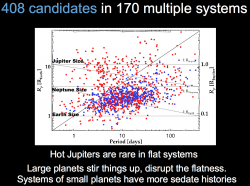
Systems containing large gas giants have also been found but they are not as flat as those without, and many smaller worlds are indeed out there… “probably including a lot of them comparable in size to Earth,” said planet-hunter Geoff Marcy of the University of California, Berkeley.
While multiple-planet systems were expected, the scientists on the Kepler team were surprised by the amount that have been discovered.
“We didn’t anticipate that we would find so many multiple-transit systems. We thought we might see two or three. Instead, we found more than 100,” said Latham.
A total of 171 multiple-planet systems have been found so far… with many more to come, no doubt!
Announced yesterday at the American Astronomical Society conference in Boston, these findings are the result of only the first four months of Kepler’s observations. There will be another news release next summer but in the meantime the team wants time to extensively research the data.
“We don’t want to get premature information out. There’s still a lot of analysis that needs to be done.”
– Kepler principal investigator William Borucki
Read more on the Kepler mission site, or on Science NOW.

